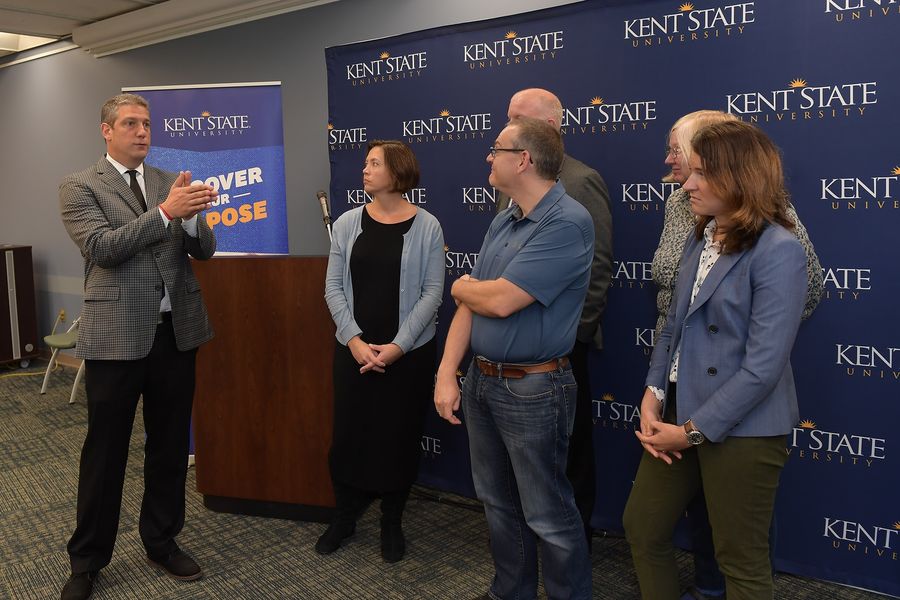National Science Foundation
NSF Award Helps Kent State Anthropologists Expand International Partnership
A new federal grant will help Kent State University expand an international relationship and provide invaluable opportunities for some graduate students. The National Science Foundation (NSF) recently awarded Kent State a three-year $298,000 International Research Experience for Students (IRES) gra…
NSF Supports Inter-institutional Project to Develop Chemical Sensor Technology
Toxic air pollutants such as chlorine and ozone are hazards for civilian workers and public service employees like firefighters, police and military personnel. Some airborne chemicals can be difficult to detect at low levels with high specificity, though, and relevant technologies like wearable sens…
NSF Awards Kent State Researchers $1.3 Million to Nourish Children’s Minds, Fill Their Bellies
Science is complex, and it’s difficult to discuss it with children under the best circumstances; it’s even more difficult when they are hungry. Two Kent State University researchers may have cooked up a way to solve both of those problems, and the National Science Foundation just awarded them a three-year, $1.3 million grant to determine if their recipe works.

NSF Awards Kent State Researcher Nearly $1 Million for Separate Liquid Crystal Studies
Trustees Research Professor Oleg Lavrentovich, Ph.D., a chemical physicist in Kent State University’s Advanced Materials and Liquid Crystal Institute (AMLCI), just received nearly $1 million between two grants from the National Science Foundation (NSF) for separate studies with potential applications in biomedical science, commercial electronics and beyond.

Kent State Biological Sciences Researchers to Lead Study on the Effects of the Spreading Eastern Red Cedars
The National Science Foundation has awarded a three-year, $914,000 grant to Kent State University to lead a collaborative research project to study how and at what rate the geographically most widespread native conifer in the eastern United States, the Eastern Red Cedar tree species (Juniperus virginiana), spreads across the landscape.

NSF Award Funds Sensor Research at Kent State’s New Advanced Materials and Liquid Crystal Institute
Thanks to a rare Grant Opportunities for Academic Liaison with Industry (GOALI) award from the National Science Foundation (NSF), Kent State University researchers in the new Advanced Materials and Liquid Crystal Institute will be able to work with partners at Merck Performance Materials to advance life-saving sensory technology.

U.S. Rep. Tim Ryan Announces $3.7 Million in Federal Research Grants to Kent State
U.S. Rep. Tim Ryan has announced $3,723,765 in federal research grants from the U.S. Department of Health and Human Services and the National Science Foundation to be awarded to Kent State University. “Kent State University has been at the forefront of academic research and education,” U.S. Rep. …
Psychological Sciences Graduate Students Awarded NSF Fellowships
If you compare the fields of medicine and education you would find that the former bases its practices on empirical scientific research whereas education is mainly driven by intuition. However, cognitive psychology researchers at Kent State University who investigate student achievement are trying t…